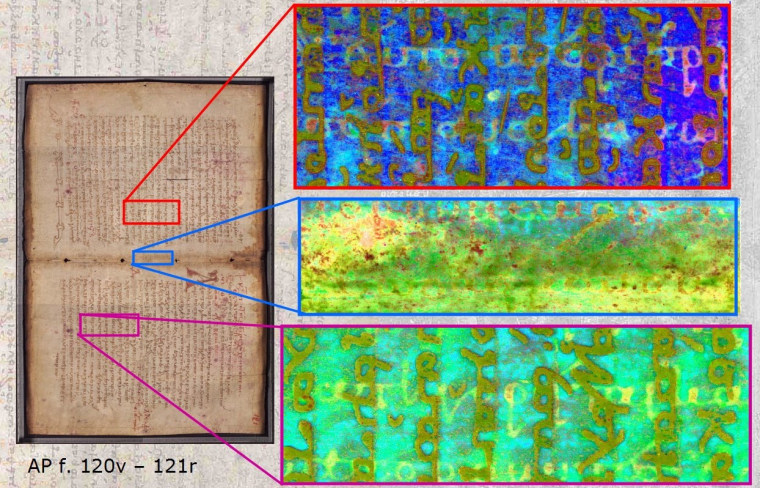Look closely at the faded letters of a centuries-old piece of parchment, and behind them you might see the remnants of an earlier work: perhaps a play or poem thought lost for generations. Scholars are applying a high-tech method to extract these hidden texts, left unnoticed or ignored for centuries — and scrambling to do so before they're lost forever.
It's called multispectral imaging, and it's already brought back to life a map possibly used by Christopher Columbus, never-seen poetry by William Faulkner and a Baroque-era concerto that perhaps no living person has heard.
"Most people don't realize the potential here to radically change the canon of literature, history, music — you name it," Greg Heyworth, an English professor pursuing the technique with a small set of students and colleagues, told NBC News.
Heyworth, at the University of Mississippi, and collaborator Roger Easton, from the Rochester Institute of Technology Chester F. Carlson Center for Imaging Science, are at the forefront of what amounts to a new field of study. They aim not just to preserve old texts that may not survive another decade in a damp archive or war-torn country, but to withdraw secrets from them that no one suspected were ever there.
Easton, for instance, has been working on journals written by the famed Victorian explorer of Africa, David Livingstone — who seems to have run short of diary pages.
"He wrote on newspapers, with berry juice — and the juice immediately faded. It's unreadable," Easton said in a phone interview with NBC News. With multispectral imaging, however, Easton and others were able to make the text as clear as day.
"It's amazing how much skepticism we had at first," Easton recalled of the scholars in the field. "They were saying, 'You won't get anything out of this,' and we said, 'Oh, yes we will.'"
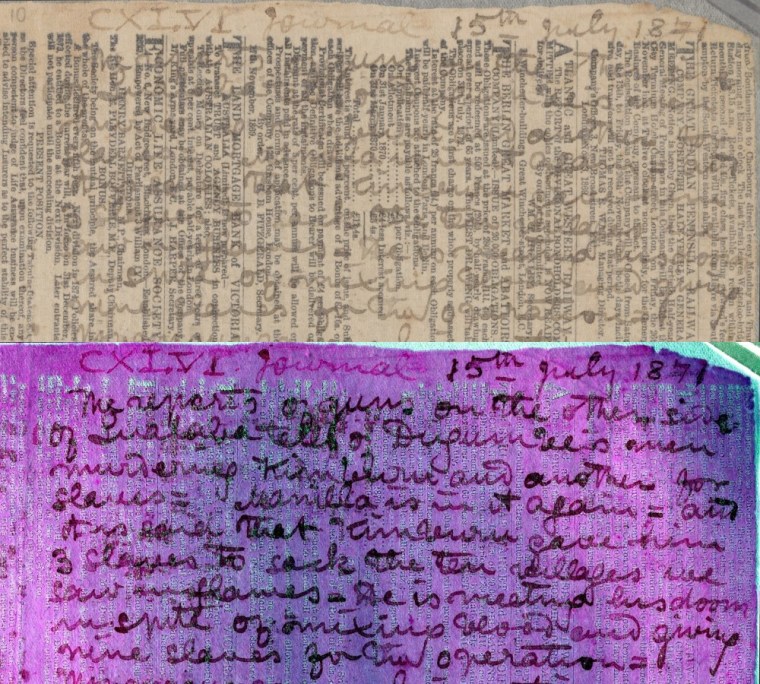
'An esoteric science'
Multispectral imaging works by photographing the object illuminated by numerous, very specific wavelengths of light, one at a time. Various materials, pigments and inks respond differently to, say, ultraviolet light versus deep green, By examining each of these specially lighted images carefully and combining them ("the image processing is where the magic happens," Easton said), features that were invisible to the naked eye become distinct and readable.
"It really is an esoteric science," said Heyworth. "But it's transformative." In particular, palimpsests — documents that, to save parchment, were erased and written over long ago — respond well to multispectral imaging, but they're just the start.
A 15th-century map that may have been consulted by Columbus came to life under multispectral imaging, revealing names, annotations and descriptions far beyond what anyone expected, and potentially altering the story of the Italian's famous voyage to the New World.
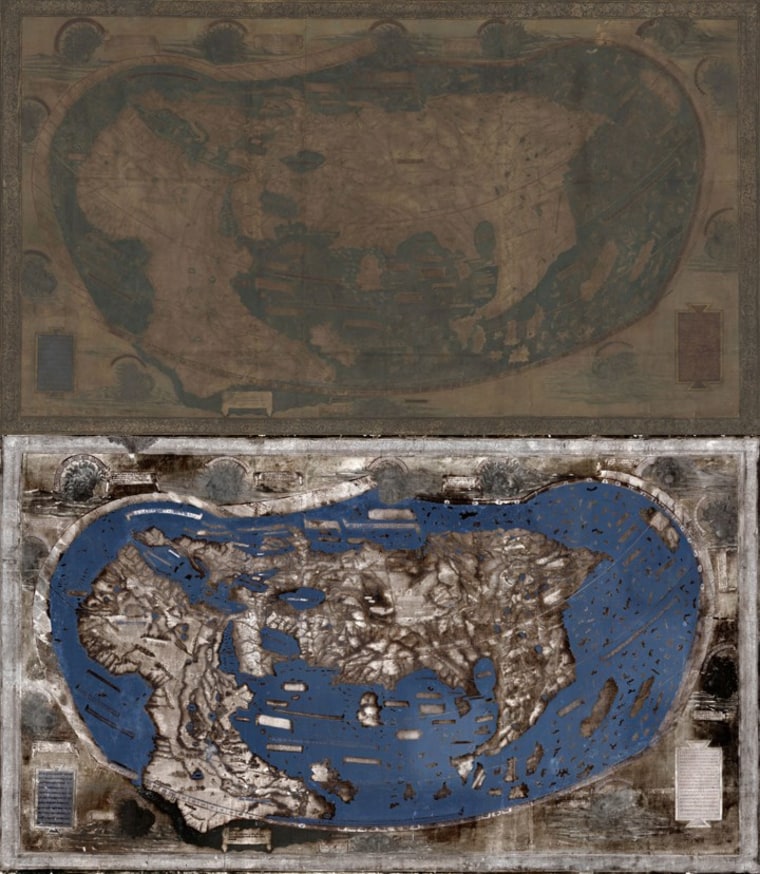
Musical scores damaged by fire, time, water, or all three, can also be brought back to life. There are Biblical gospels sitting around that no one living has ever read. And a few lost poems by Faulkner that would have crumbled to nothing in a few years were saved as well ("They're terrible," said Heyworth, but nevertheless they are highly important to Faulkner scholars).
These recovered scraps, it turns out, aren't just footnotes or ephemera. Entirely new primary texts and pages of works thousands of years old are being discovered. Documents from classical authors like Archimedes and Galen, and newer works, like the the Declaration of Independence and Shakespeare-era books, are being scoured for interesting details. (Jefferson erased "subjects" and wrote "citizens" in one section of the Declaration, for instance.)
With somewhere over 50,000 (and perhaps several times that) parchments, scrolls, maps and other documents lurking in back rooms of monasteries, forgotten collections at libraries, or even hidden inside other books, there's a lot of potential for big finds.
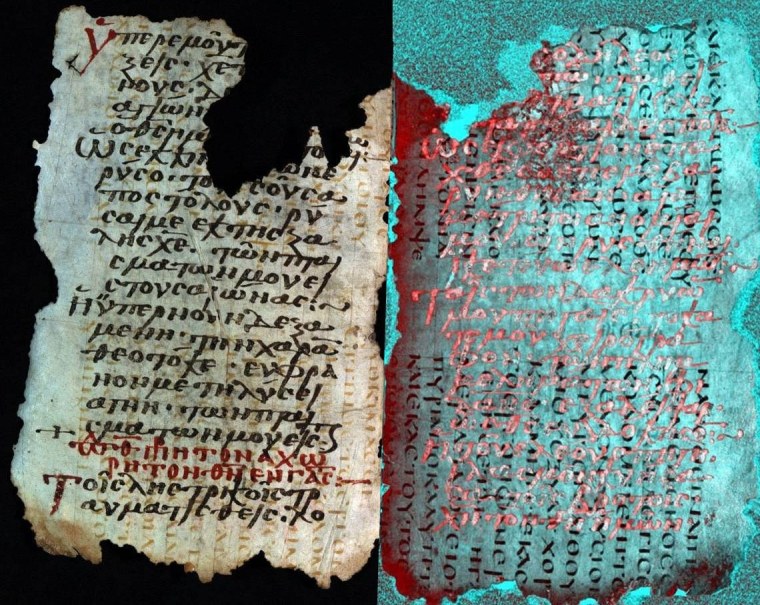
The problem is that so few people are skilled in this kind of detective work. The equipment is fairly expensive — to build one from scratch might cost $100,000, Easton estimated — and can be bulky, though a new portable version fits in a suitcase and the cost is coming down. Even if it were cheap and compact, would-be discoverers require a lot of expertise to wrangle the dozens of images and settings involved.
With a dedicated group and a bit of grant money, however, it would just be a matter of time before these treasures were uncovered. If only there were time.
History in ruins
"Many of these objects aren't going to last," Heyworth said. "They're out there where there isn't money or the ability to reach them — and they're in danger, as you've seen with ISIS."
The Islamic extremist group has been razing monuments and statues all over the Middle East, and armed conflicts often go hand in hand with looting, bombing and vandalism of historical sites and museums.
And if war doesn't ruin these treasures, they can fall to nature or old age: Documents are routinely lost to flooding, storms, fires and other natural disasters. Even relatively recent paper records, including documents from the civil rights movement in the 1960s, are fading away to nothing. Without someone like Easton or Heyworth to recover them, they will end up simply being thrown away.
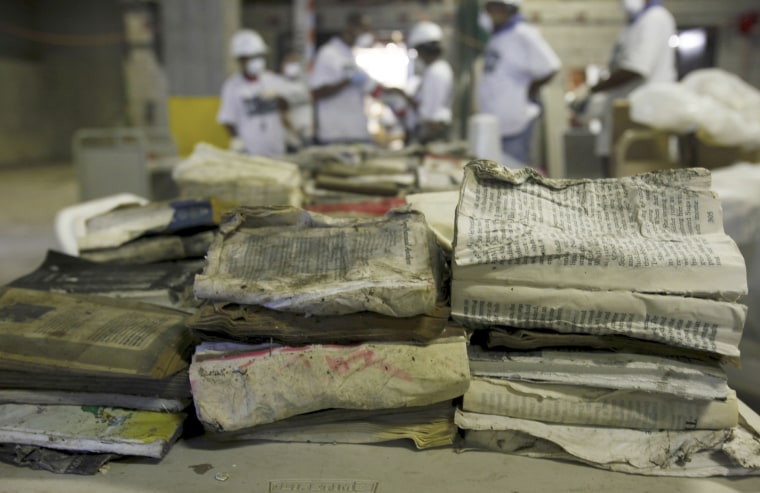
The gravity of the situation is producing a healthy multidisciplinary effort that's all too uncommon these days, Easton said: "You've got scientists and humanities people trying to talk. And we don't always speak the same language."
The goal is to spread the knowledge and equipment as widely as possible — Easton, Heyworth and their colleagues are in talks with libraries, universities and archives around the world in hopes that other concerned scholars and engineers will lend a hand. Much research is still needed about how to improve the process, detect falsified data and determine why and when multispectral imaging even works.
In the meantime, the results speak, or perhaps play, for themselves: Heyworth has retrieved a concerto by Georg Philipp Telemann, a contemporary of Mozart's, and hopes to find a collaborator who can help perform it — possibly for the first time in centuries. And the researchers themselves are having the time of their lives.
"It's stuff that we couldn't even imagine doing 20 years ago," Easton said. "Whenever we get something, I'm just blown away that, one, that we got it — and two, that I'm the one that gets to do it."
